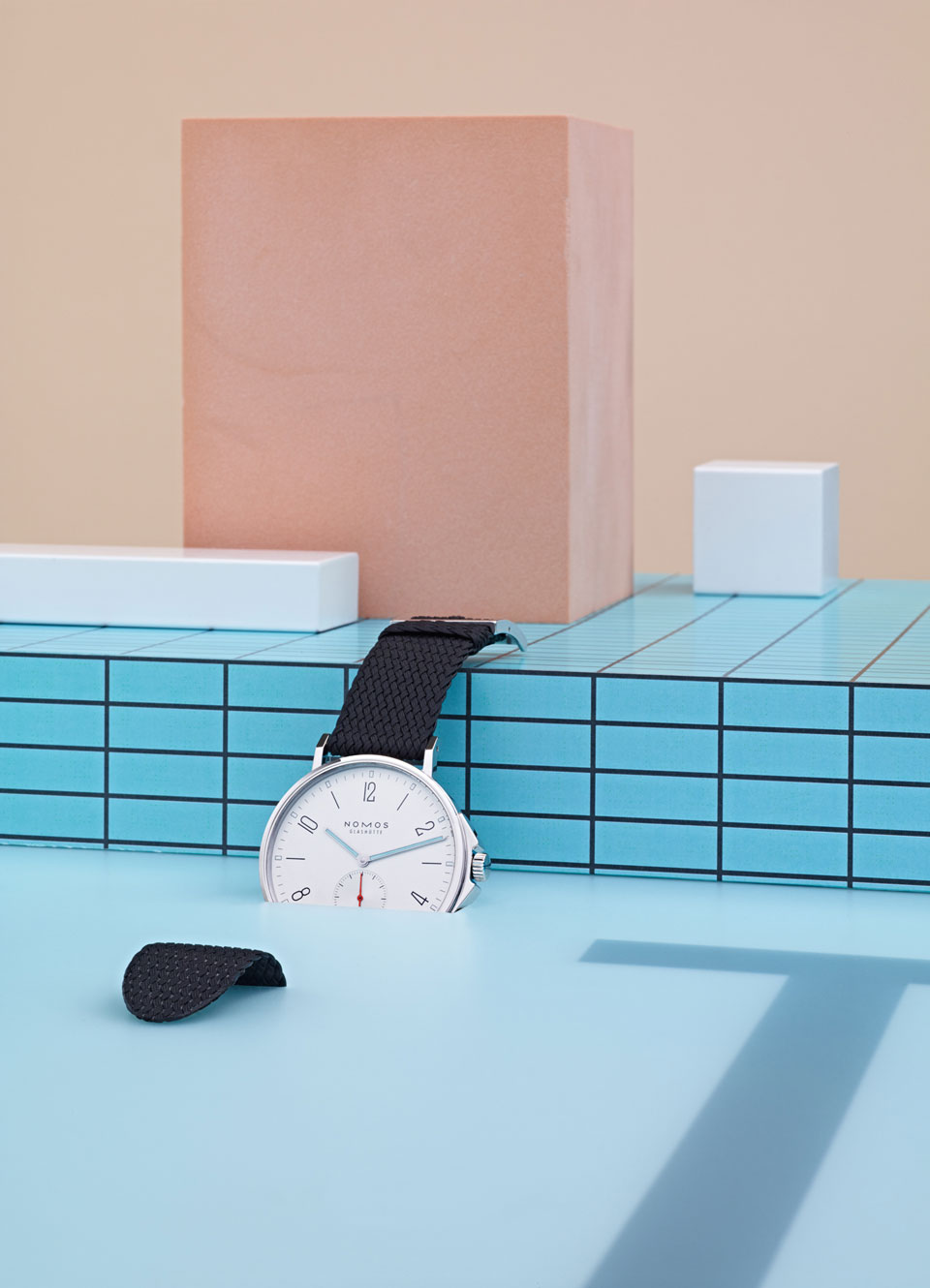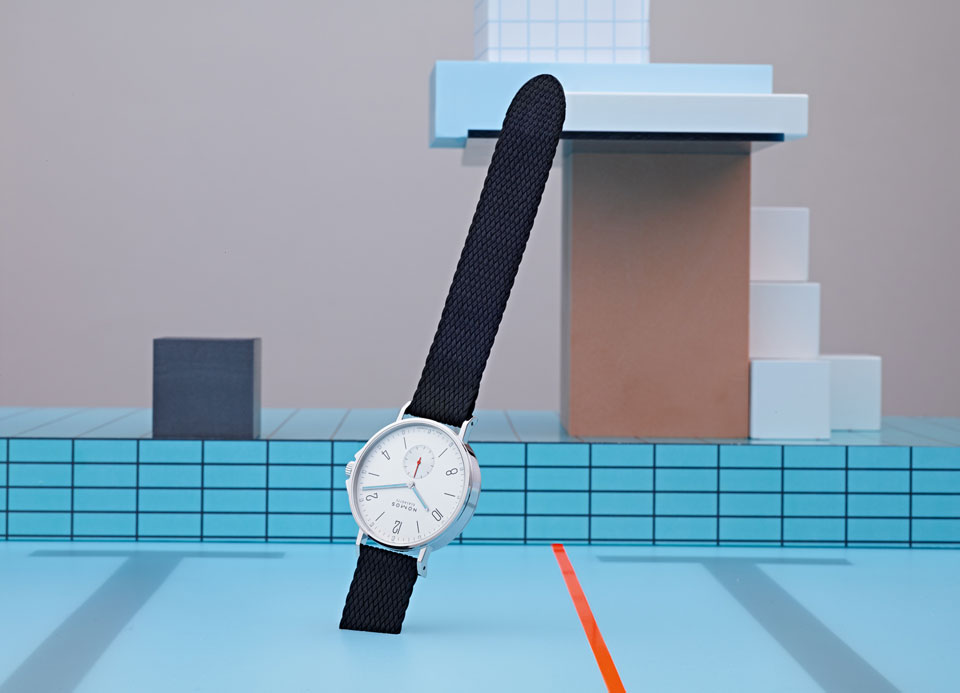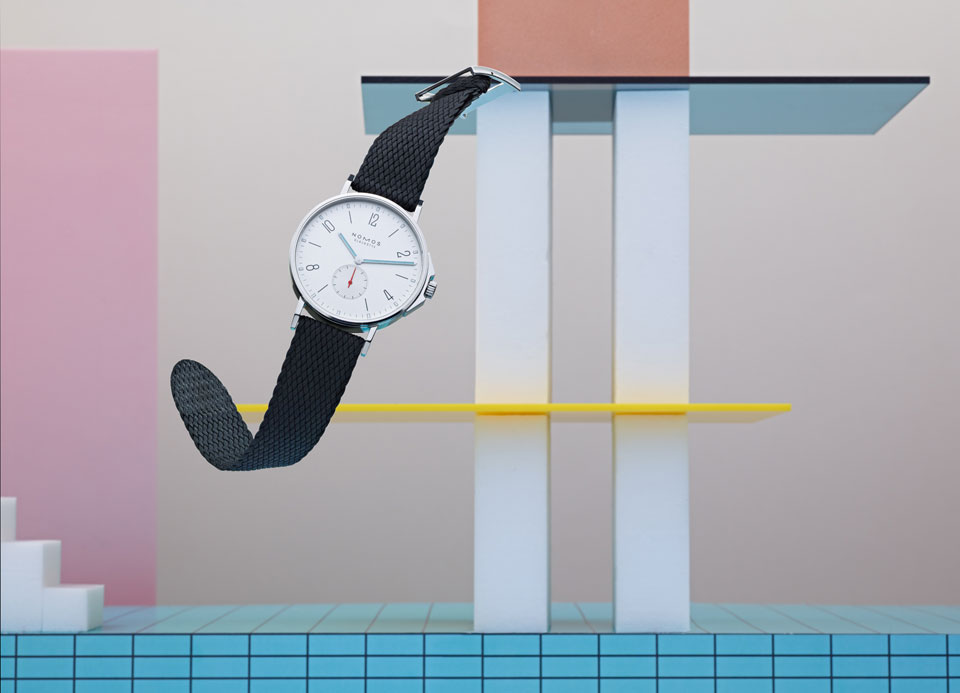Nomos Ahoi
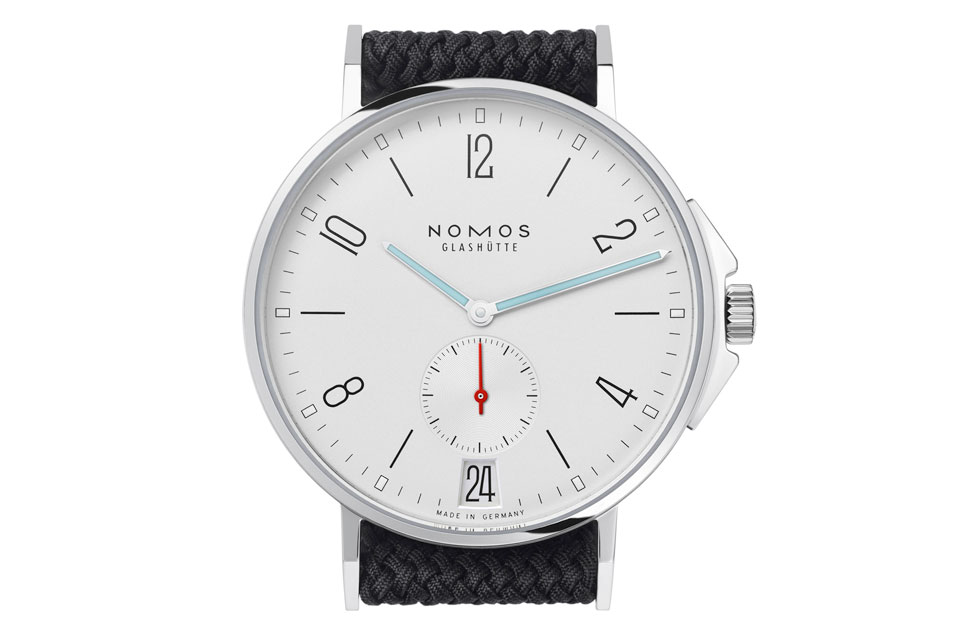
Sea robbers, pirates, buccaneers and corsairs – all have been around since the birth of naval exploration. These men plundered, robbed and seized ships from merchants and traders coasting along the trade routes even during medieval times. Flags were raised on the ships of these men to frighten nautical passersby: the Jolly Roger was the skull-and-crossbones flag, famously announcing death on board. These seafaring outlaws flourished during the sixteenth and eighteenth centuries by way of lucrative, unlawful acts. The golden age of piracy it was then. The rampant growth of these men’s trade gave rise to the sanctioning of lawful pirates called privateers. Their rise helped turned the tide against the pirates’ devious acts, giving merchants of the sea some peace of mind whenever they spotted a friendly privateer. Ahoy they would say, or as the Vikings of old would have scribed it, Ahoi.
Pirates, buccaneers and privateers? One might be wondering what this has to do with watches, pondering If the Monochrome staff might be drinking too much ale in the pub right across the street. The other journalists sitting at the bar look on and shake their heads, futile they say, futile! But as we down our last mug, an unlikely connection springs to mind. Glashütte we look towards… but not Lange nor the Original, but to a brand that draws their history from the legacy of the ore mountain pirates: Nomos is their name.

Similar to the story of Lange’s rebirth, the fall of the Berlin wall fueled the rise of these mechanical wonders. Where Lange continued its tradition and rich heritage of watchmaking, Nomos was busy reinventing itself. The Nomos name has been around for more than 80 years, at which time it was considered to be a “pirate brand” that constructed watches with Swiss-based movements, something that was seen as sacrilege back in those days. As such, the new Nomos did not enjoy the same rich heritage that Lange had, but rather had to cleanse itself from its tarnished image of a watch brand.

But despite everything, founder Roland Schwertner who found the Nomos name pleasing, still took a chance; he believed that the “pirate” name of Nomos could be changed, that if it could redeem itself from its “pirate” branding, it would later become their biggest asset. In 1990, the new Nomos was founded, nothing like the old one other than its name. The company established itself in a small town called Glashütte, near the eastern region of Erzgebirge (“Ore Mountains”), a town that has become more or less a watch-Mecca today. By 1992, the Glashütte branding was established, insisting that at least 50% of the watch caliber must be made in Glashütte in order to qualify for its designation. Finally, it was time for Nomos to prove themselves worthy, and they did so with finesse. A few years later, they were ore mountain pirates no more. Nomos was now a manufactory.

Opting to become a manufactory, however, especially in the 90s, was a bold move by Nomos. In an era where the markets were clamoring for quartz pieces, for Nomos to build a mechanical piece, let alone a manually-wound one, could have spelled disaster for the company. But still, they pushed forward in this cutthroat market of watches. With a whole new perspective of design aesthetics, Nomos released their first and probably most famous piece – the Tangente: round case, white plain dial, a small seconds subdial, and a date aperture at 6 o’clock (Tangente Datum models). This bauhaus-like contemporary design has become the inspiration and the centerpiece of the company’s style. A very unique, fresh outlook on timepieces that earned the descriptor “designed classic” for their quality and craftsmanship.
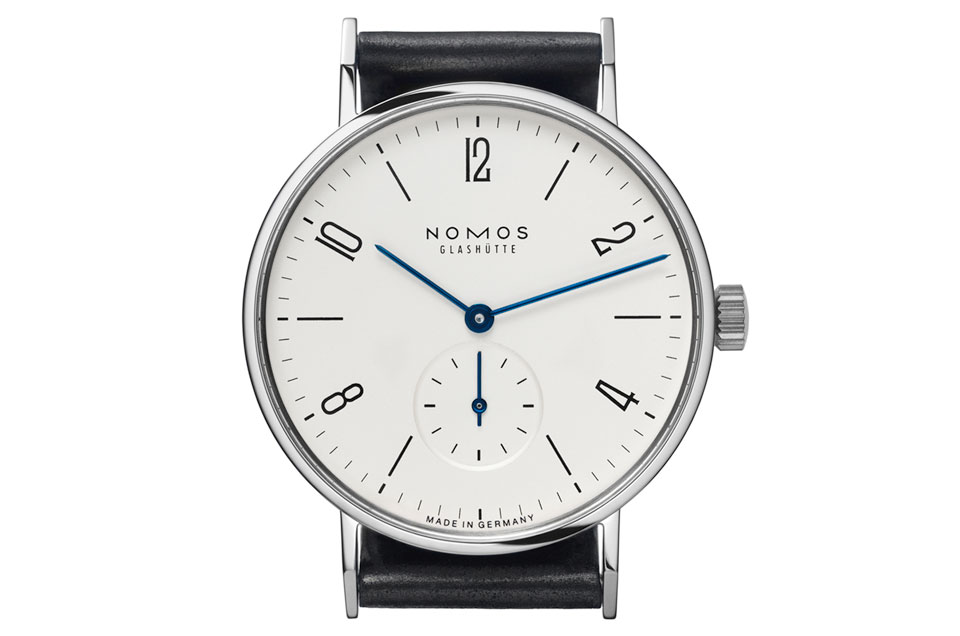
Inside the Tangente you’ll find a hand-wound manufactory caliber, their first one, called the Alpha movement. Afterwards it was followed with the same similar movement plus a date complication, which they conveniently called the Beta movement for the Tangente Datum model. The success of the Tangente was unprecedented, in that it earned several design awards to cement its name among the Saxon giants. But the notion of a hand-wound model was not accepted by some, especially in an era when mechanical watches were only beginning to rebuild their former glory. By 2005, the company released its first automatic movement, using the same aesthetic design of the Tangente. A new piece was unveiled – the Tangomat.
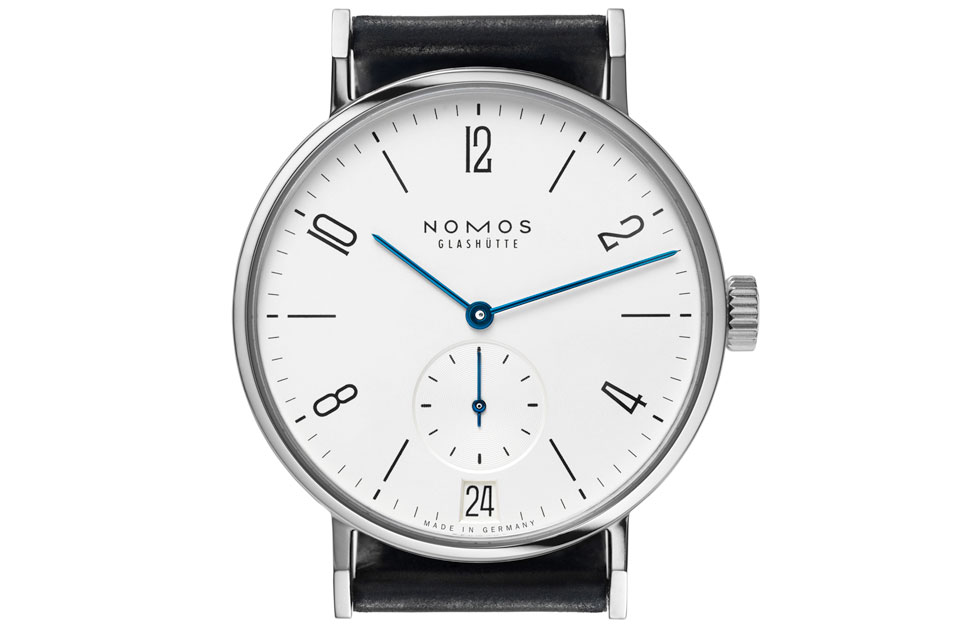
An automatic version of the Tangente, with a little size increase to fit the bigger movement contributed by the bidirectional winding rotor. Conversely, a datum version was also made available with the same date complication fitted into the automatic movement. Nomos movements are developed and constructed in Glashütte. Around 75 to 95 percent of the movement, depending on the model, is made in the same town. All of these are finely adjusted in six positions to improve accuracy and finished with a Glashütte ribbing and Nomos-Perlage. Thus, despite their affordability, these timepieces hold true to their Glashütte designation. To this date, Nomos already has eight different calibers in their lineup (not counting the black gold versions), ranging from manual-wound, to automatic, to full-fledged world time complication – a monumental feat for a manufactory who’s only been in the industry for 20 years.

Fast forward to Baselworld 2013. Nomos released something unexpected from the brand, although no new movements were introduced, even with strong expectations after the revered Zürich Weltzeit was released a few years back. Nomos pushed forward with the release of the new Ahoi and Ahoi Datum for Basel 2013. This time, rather than focusing on complications and new movements, the makers from Glashütte focused more on what makes a modern sports piece. The company emphasized case design and water proofing, without of course alienating the classic designs of the Tangentes and Tangomats, in the making of the Ahoi.

This 40mm diameter piece was furnished with a new screw down crown complete with crown guards, and an increase in sapphire crystal base thickness that ensures everything is tightly sealed can withstand pressure at greater depths. With all this, the new piece will be able to achieve a depth rating of up to 20 bars or 200 meters with Nomos’ exacting tests, which are based on DIN-8310 standards. The tests made with DIN-8310 (equivalent to ISO 2281 ) however only make the piece waterproof; its lack of additional features according to ISO 6425 mean it is not a legitimate diving watch per se. The absence also of a rotatable diving bezel was also a sign that the Ahoi is not yet the true dive piece that some have been clamoring for (check Wikipedia here for more details) But truer than most, the Ahoi is definitely diving inspired, and perhaps a sign of things to come from this great young manufactory.

The Ahoi will also feature new SuperLuminova light blue hands along with the hour indices and a new red small seconds hand. Additionally, the Ahoi will now come equipped with a black waterproof strap made of textile fabric with a specialized Nomos-owned wing clasp (double-sided clasp) for a more secure fit. The piece will come with a similar automatic movement found from the standard Tangomat pieces. The fully decorated Glashütte-based Epsilon movement and the Zeta movement for Datum models.
In the end, the new Ahoi models are your typical casual sports piece, ready for any beach trips and swimming sessions this summer. Although their inspiration came from the rich diving ethos of timepieces, they’re not quite there yet. But the Ahoi does come back on you with superior quality and a true in-house manufactured movement that is superiorly decorated by the hands of expert Glashütte makers – enough even to elicit a greeting from famous privateer Sir Francis Drake himself (if he was alive today), in which case the proper response is to raise your right hand in full sail and greet back… Ahoi matey!
Photo credits of the last three art photos go to Nomos Photographer Sarah Illenberger.
Be sure to check out the Nomos webpage for more details.

